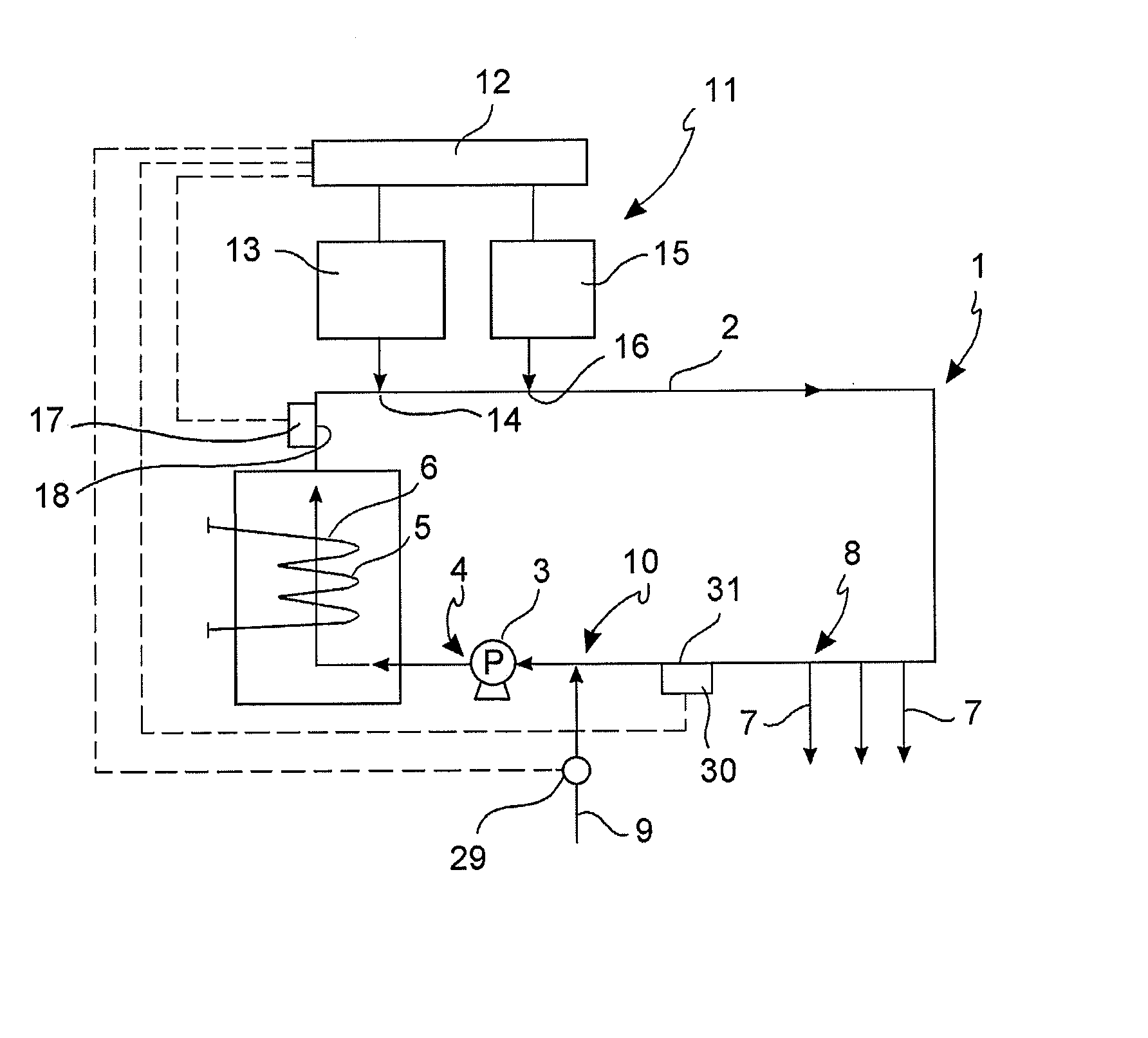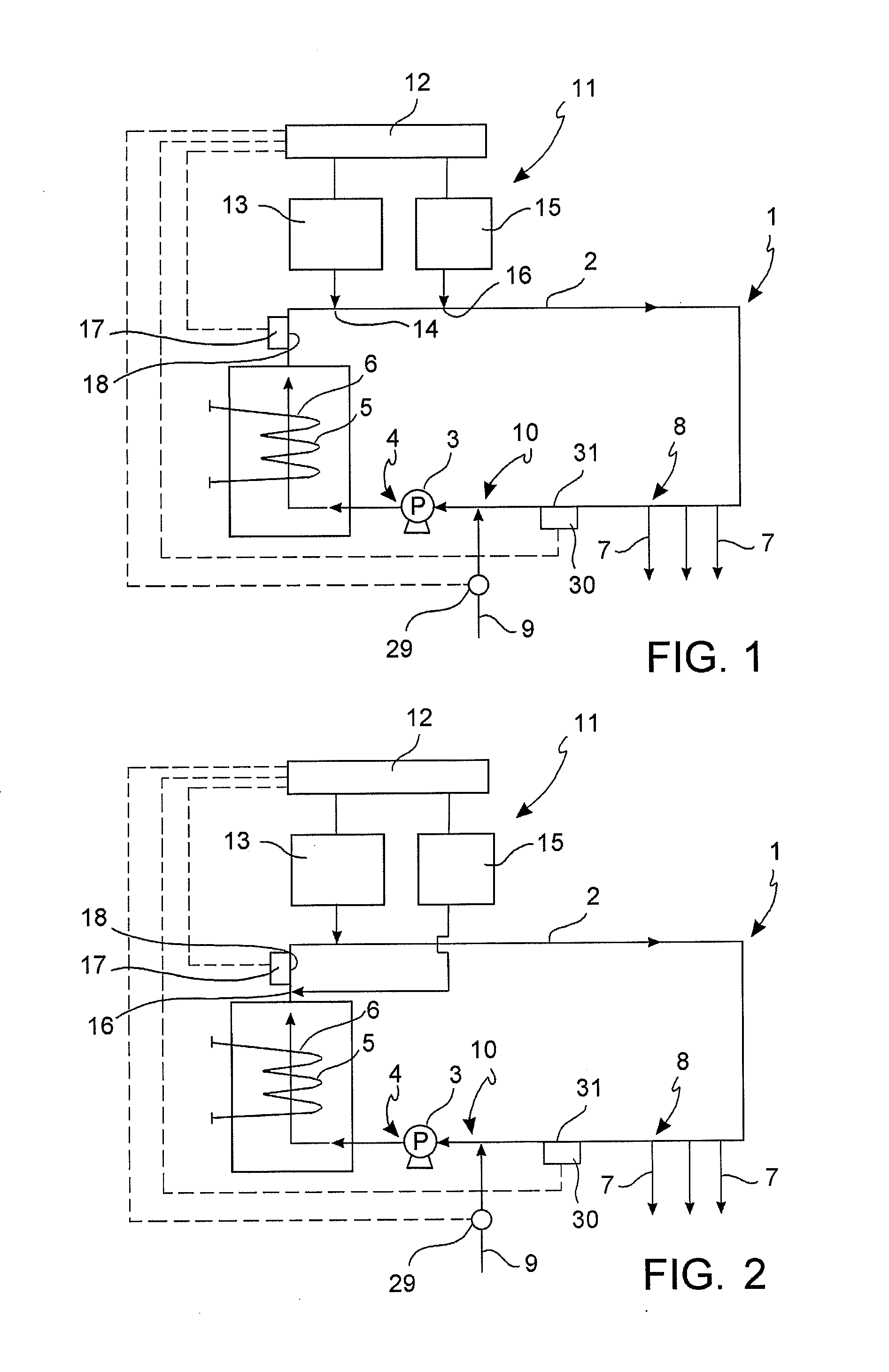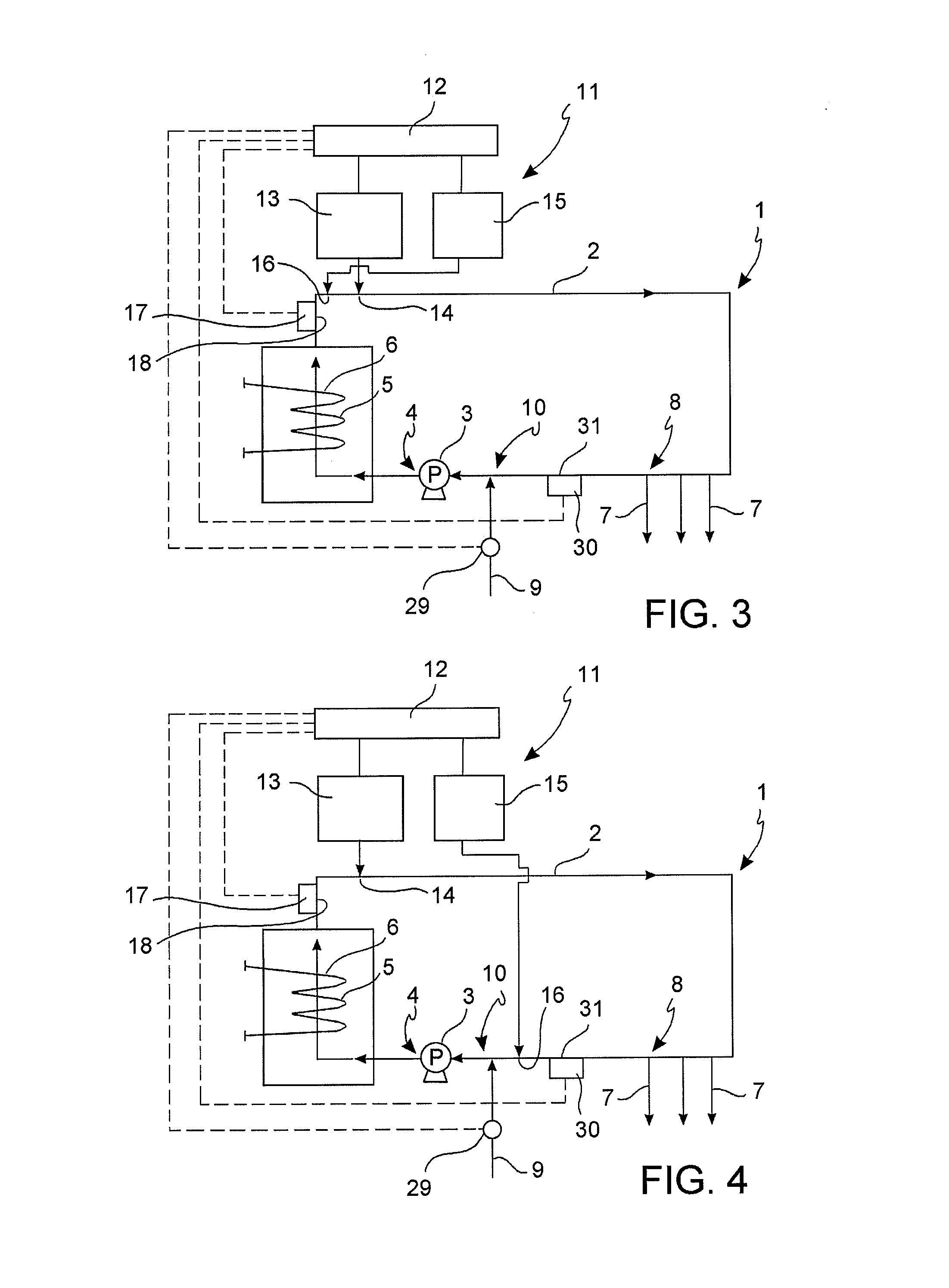Hot sanitary water system and method for disinfection of hot water
a hot water system and hot water technology, applied in specific water treatment objectives, water treatment parameter control, waste water treatment from bathing facilities, etc., can solve the problems of legionella /i>proliferation, high mortality rate of humans, dangerous for human health,
- Summary
- Abstract
- Description
- Claims
- Application Information
AI Technical Summary
Benefits of technology
Problems solved by technology
Method used
Image
Examples
Embodiment Construction
[0048]According to the invention, the method and disinfection system is applicable to warm water recirculating systems 1 comprising:[0049]an annular water duct 2,[0050]a pump 3 connected to the annular duct 2 at a pumping point 4 to make the water circulate in the annular duct 2,[0051]heating means 5, such as an electric or gas boiler, connected to the annular duct 2 in a heating point 6 and configured to heat water upon its transit through the heating point 6,[0052]one or more withdrawal ducts 7 connected to the annular duct 2 at respective withdrawal points 8,[0053]a supply duct 9 connected to the annular duct 2 at a supply point 10,[0054]optionally, a water tank connected to the annular duct 2.
[0055]In normal use of the recirculation system 1, the pump 3 makes the water circulate in the annular duct 2 through the heating means 5 which heat it to keep the water temperature within a predetermined range. The warm water is made available to users through the withdrawal ducts 7 and th...
PUM
| Property | Measurement | Unit |
|---|---|---|
| temperatures | aaaaa | aaaaa |
| temperatures | aaaaa | aaaaa |
| temperature | aaaaa | aaaaa |
Abstract
Description
Claims
Application Information
 Login to View More
Login to View More - R&D
- Intellectual Property
- Life Sciences
- Materials
- Tech Scout
- Unparalleled Data Quality
- Higher Quality Content
- 60% Fewer Hallucinations
Browse by: Latest US Patents, China's latest patents, Technical Efficacy Thesaurus, Application Domain, Technology Topic, Popular Technical Reports.
© 2025 PatSnap. All rights reserved.Legal|Privacy policy|Modern Slavery Act Transparency Statement|Sitemap|About US| Contact US: help@patsnap.com



